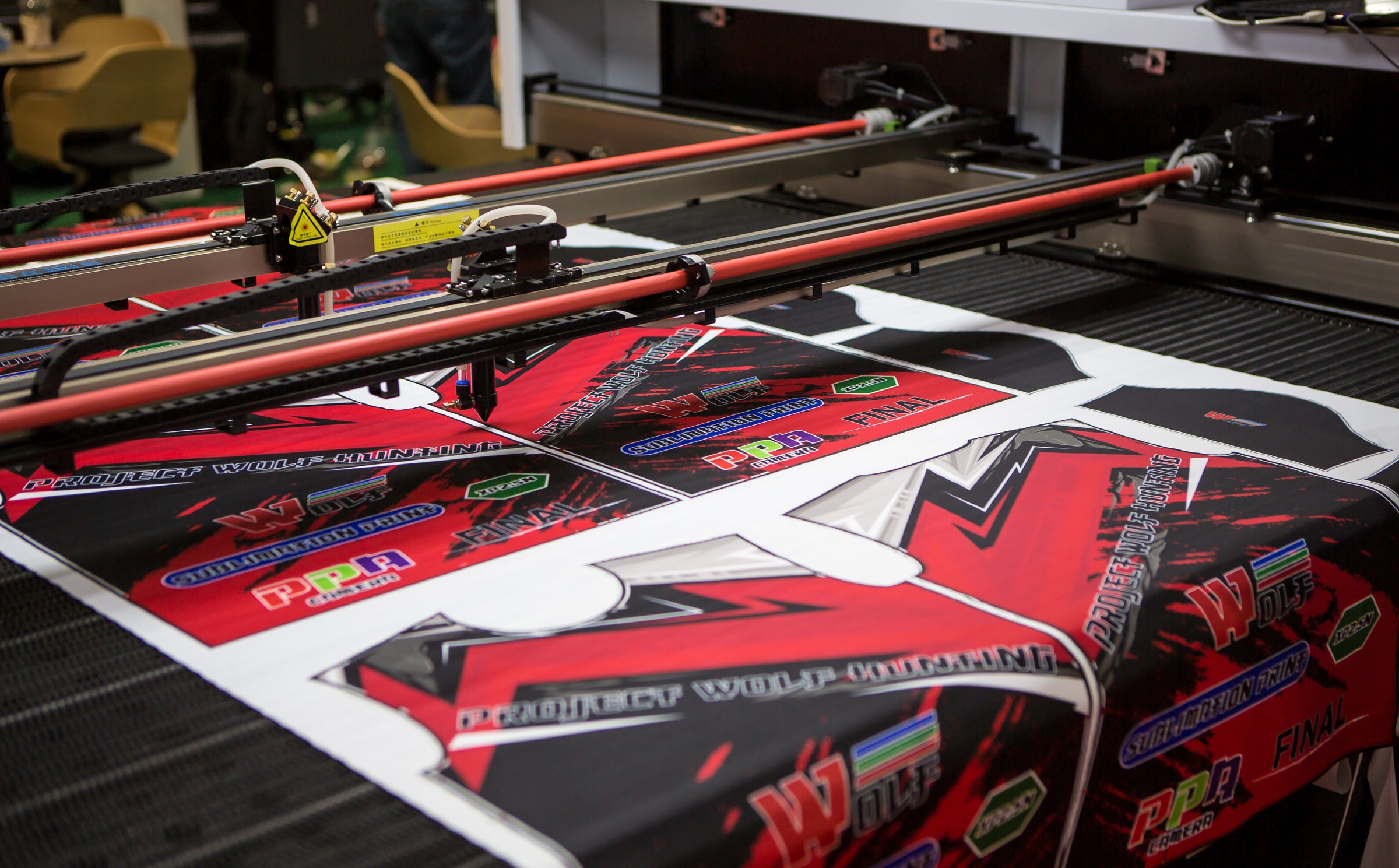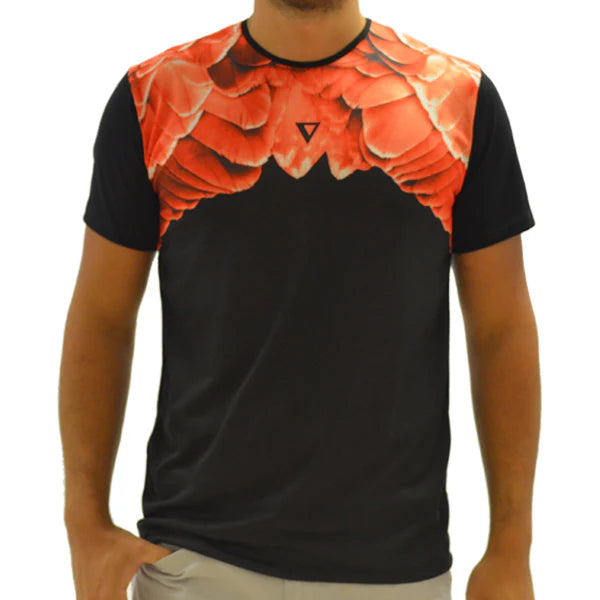
Cut and sew sublimation is a high-fashion garment printing process, yielding beautiful full-color designs — and the only limitation is your budget.
- Cut and sew sublimation printing is done on unassembled pieces of fabric.
- Cut and sew sublimation avoids many of the limitations (creasing, blurring) of blank apparel sublimation.
- Cut and sew sublimation has a longer turn-around time.
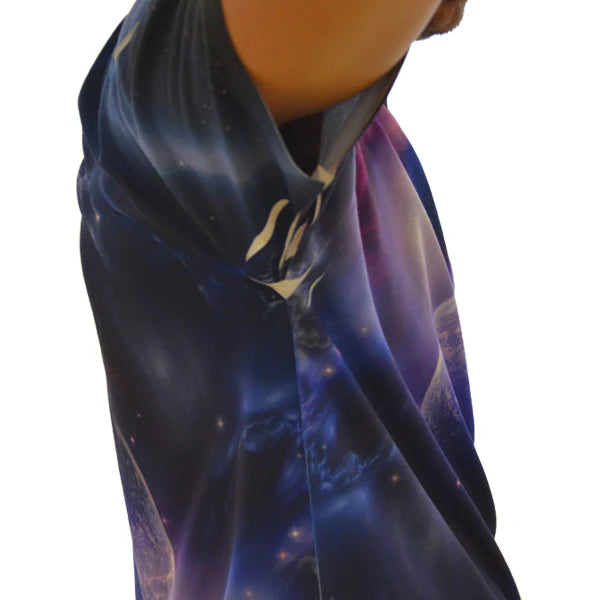
Blank apparel sublimation is an economic garment printing process, yielding beautiful full-color designs with some limitation, including blurring and creasing.
- Blank apparel sublimation printing is done on an assembled, complete garment (e.g., a t-shirt or hoodie).
- Blank apparel sublimation has limitations, including creasing, blurring, and areas that will not print.
- Blank apparel sublimation printing has a faster turn-around time.
Results to Expect
Sublimation is a garment and apparel printing technique. This printing process provides all-over coverage in full color. Not only that, sublimation offers superior softness and wearability. Sublimation printing blank garments is the more economical of the two printing processes, although there are certain unavoidable limitations of sublimation printing stock garments. Cut and sew sublimation is a more involved and more expensive process of dye-sublimation — however, the end result is far higher quality
Results to Expect When Dye-Sublimation Printing Cut and Sew Apparel
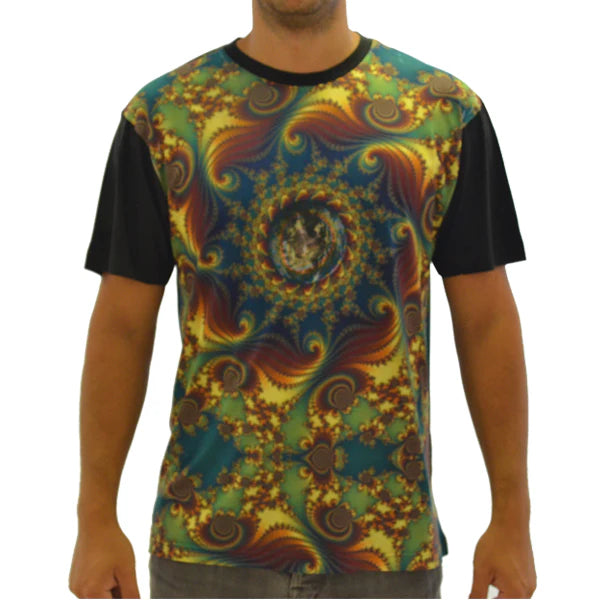
Cut and sew dye-sublimation printing allows for full coverage designs and artwork.
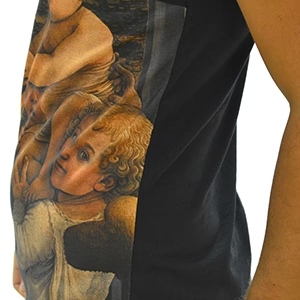
If only sublimating the front panel of the garment, cut and sew manufacturing results in clean-edged side seams.
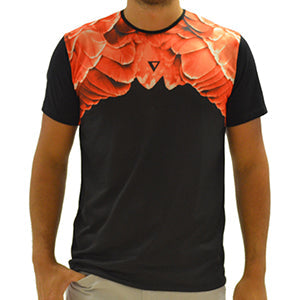
A dye-sublimation print does not necessarily have to cover the entire panel. It can be sized and positioned in any way.
Results to Expect When Dye-Sublimation Printing Blank Apparel
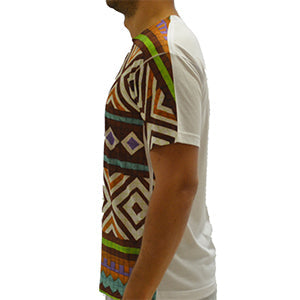
Single-sided (e.g., front or back only) dye-sublimation prints will show the bare garment color on the non-printed side.
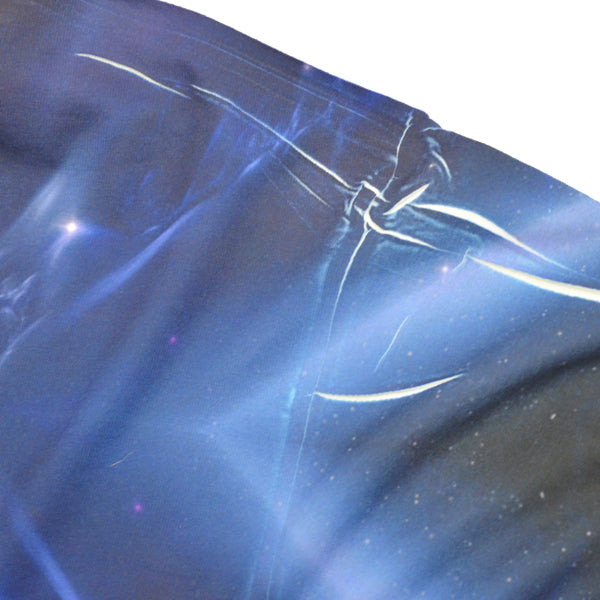
Areas near seams may produce smudges and blurs; creasing near the edges of the garment is also commonplace.
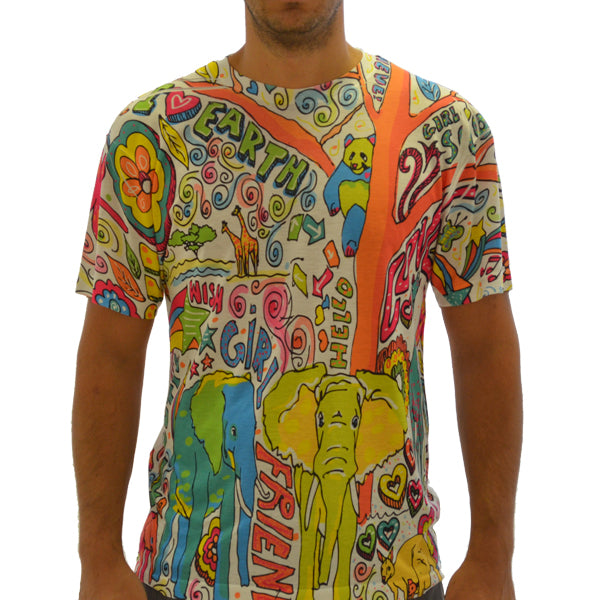
Designs that are planned around these unavoidable limitations can enhance the garment appearance.
Sublimation Printing
Why Choose Our Sublimation Printing Services
High-Quality Results and Vibrant Colors
Our sublimation printing services offer high-quality results that bring your designs to life. Because we use advanced technology, you can expect vibrant colors and sharp details on every product. But don’t just take our word for it—our satisfied customers speak volumes about the quality of our work.
Affordable Prices Without Compromising Quality
We understand that not everyone has a big budget, so we provide affordable sublimation services without compromising on quality. So whether you’re a small business owner or an individual looking to create personalized gifts, our prices will fit your needs. And because we value transparency, there are no hidden fees.
Fast Turnaround Times and Reliable Delivery
Time is valuable, which is why our sublimation services focus on fast turnaround times. Because we prioritize efficiency, your orders will be ready in no time. But speed doesn’t mean sacrificing quality—we ensure every item is perfect before it reaches you. So place your order today and experience reliable delivery.
High-Quality Results and Vibrant Colors
Our sublimation printing services offer high-quality results that bring your designs to life. Because we use advanced technology, you can expect vibrant colors and sharp details on every product. But don’t just take our word for it—our satisfied customers speak volumes about the quality of our work.
Affordable Prices Without Compromising Quality
We understand that not everyone has a big budget, so we provide affordable sublimation printing services without compromising on quality. So whether you’re a small business owner or an individual looking to create personalized gifts, our prices will fit your needs. And because we value transparency, there are no hidden fees.
Fast Turnaround Times and Reliable Delivery
Time is valuable, which is why our sublimation printing services focus on fast turnaround times. Because we prioritize efficiency, your orders will be ready in no time. But speed doesn’t mean sacrificing quality—we ensure every item is perfect before it reaches you. So place your order today and experience reliable delivery.
High-Quality Results and Vibrant Colors
Our sublimation printing services offer high-quality results that bring your designs to life. Because we use advanced technology, you can expect vibrant colors and sharp details on every product. But don’t just take our word for it—our satisfied customers speak volumes about the quality of our work.
Affordable Prices Without Compromising Quality
We understand that not everyone has a big budget, so we provide affordable sublimation printing services without compromising on quality. So whether you’re a small business owner or an individual looking to create personalized gifts, our prices will fit your needs. And because we value transparency, there are no hidden fees.
Fast Turnaround Times and Reliable Delivery
Time is valuable, which is why our sublimation printing services focus on fast turnaround times. Because we prioritize efficiency, your orders will be ready in no time. But speed doesn’t mean sacrificing quality—we ensure every item is perfect before it reaches you. So place your order today and experience reliable delivery.


